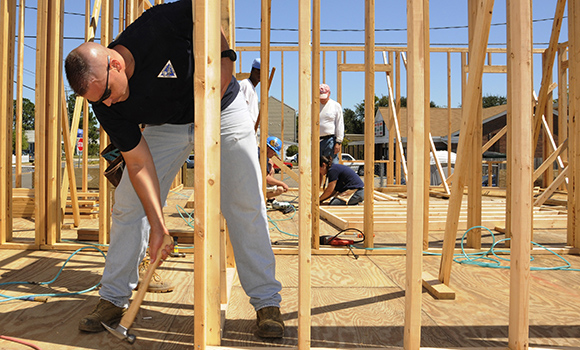
(Photo Credit: Ryan McLearnon/US Navy)
The California Economic Summit provided a detailed progress report on the state’s response to the growing housing affordability crisis in a letter to the governor and Legislature this week. The letter focuses on whether an unprecedented array of housing legislation (more than 100 bills have been introduced so far) will be enough to slow the skyrocketing home prices and rising rents that are making housing increasingly unaffordable for millions of Californians.
For the diverse group of signatories—a growing coalition of environmentalists, affordable housing and equity advocates, local planners, homebuilders, and business associations—the answer is “Not yet.”
As participants in the Summit Housing Action Team, this network of housing experts and civic leaders has been working for the last year to develop a set of policy solutions that can match the scale of the state’s housing crisis. To meet demand and slow fast-rising housing costs, the state needs to produce at least one million more homes of all types over the next decade—what the Summit calls the One Million Homes Challenge.
In January, the team released its final product, the One Million Homes Framework, outlining the full range of policy changes needed to address California’s housing shortage. This “all of the above” strategy seeks to combine substantial new investments in subsidized housing for those who can’t afford to rent or buy a home with a package of fiscal and regulatory incentives that can promote development of a new generation of market-rate housing affordable to all income levels. It also includes a range of ideas for increasing accountability to ensure jurisdictions are supporting adequate housing development.
This year’s legislation, the Summit letter argues, has not yet adopted this comprehensive approach. “While we support many of the ideas proposed so far by the Legislature,” the letter says, “we believe key elements of a statewide housing solution are still missing from the legislative debate.”
The letter notes several major legislative efforts underway to provide desperately-needed funding for below-market housing, for example, and to hold local governments more accountable for approving their fair share of new development. But it also highlights three key areas where the Legislature is not yet acting on the scale needed to make housing affordable for all Californians—by pursuing production incentives that will help communities approve (and pay) for housing, regulatory streamlining that will protect vulnerable groups and still contain development costs, and local planning changes that will simplify (and accelerate) the housing approval process in more communities.
It is early in the legislative calendar, of course, at a time when the Administration is promoting a set of broad “principles” for housing policy and the Legislature is considering dozens of potential solutions. Using the One Million Homes Framework as a guide, the Summit letter seeks to gauge where this policy discussion is headed, analyzing which elements of an “all of the above” approach are moving—and which pieces are still missing.
“Closing the state’s expanding affordability gap will require all of this and more—an ‘all of the above’ strategy that must be accompanied by a commitment from civic leaders in every region to work together to increase the supply and affordability of housing in California,” the letter says. “With your support, this will be the work of the Summit in the months ahead.”
Read the Summit letter here. To participate in the work of the Summit Housing Action Team, please contact Susan Lovenburg: susan@cafwd.org.

